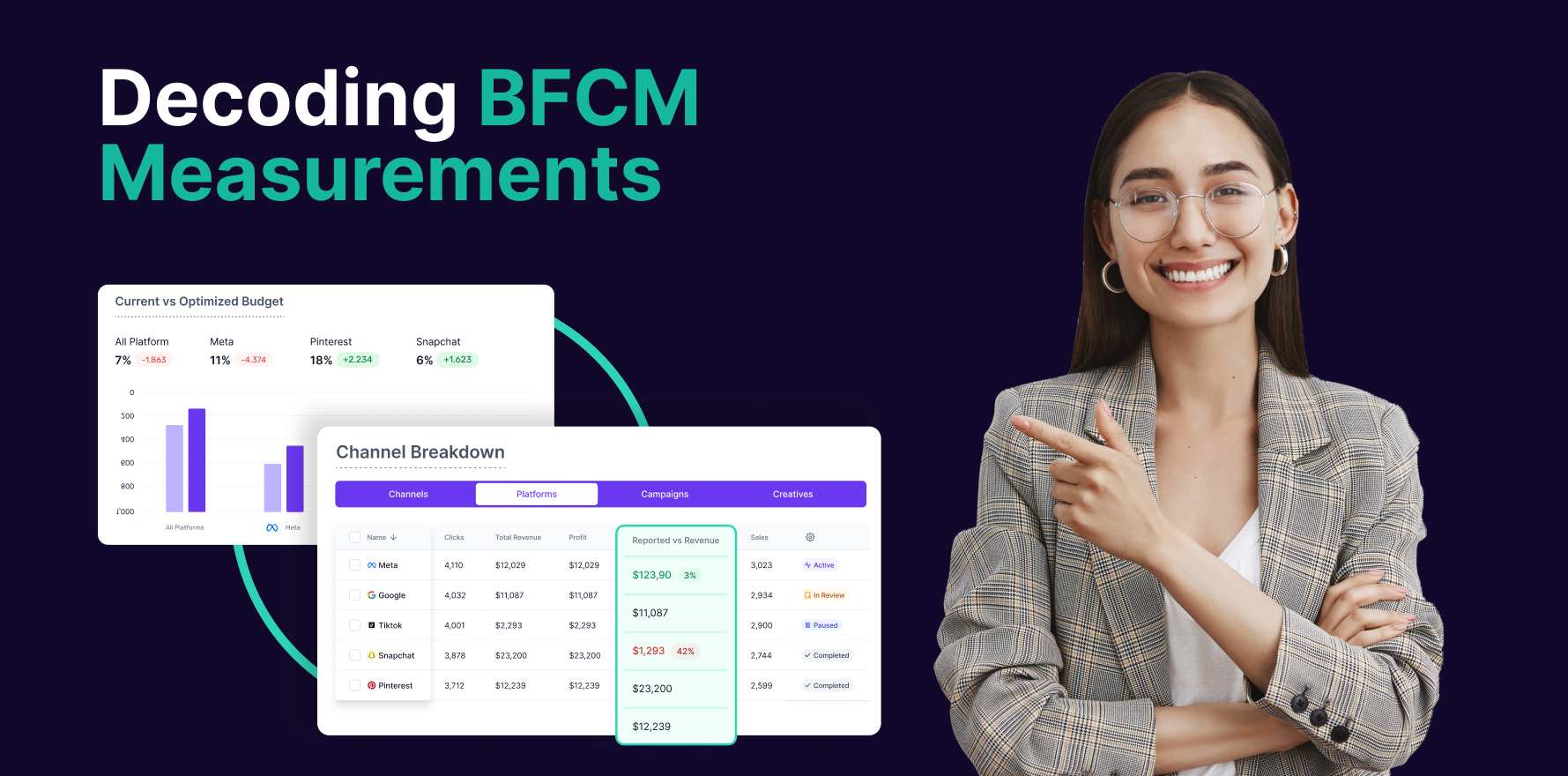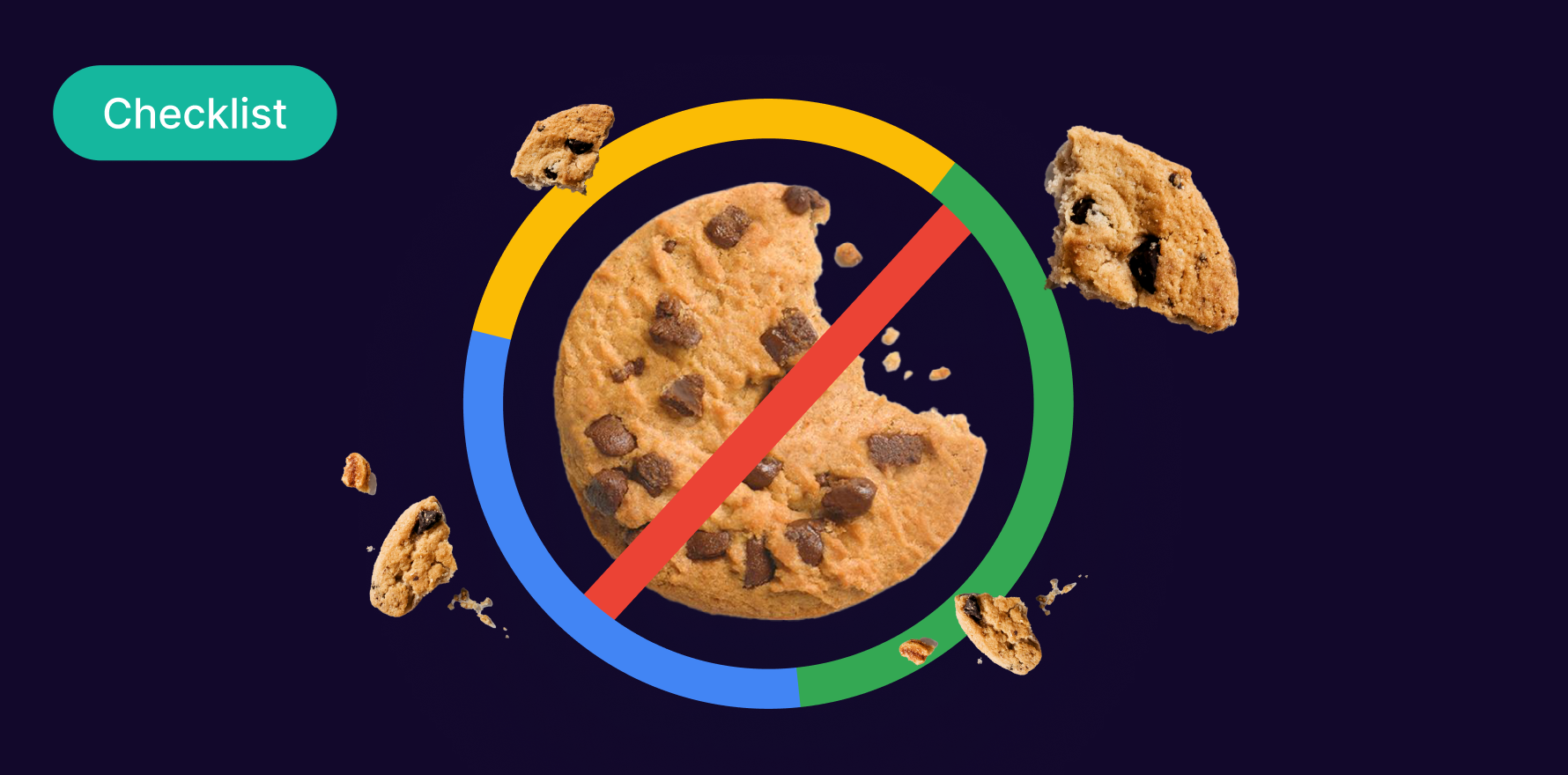Measuring the impact of digital marketing is no longer optional, it is essential. As businesses invest across multiple channels, from ads, social media to email, the real challenge is understanding which efforts are driving growth and which are not. Traditional metrics like clicks, impressions, or platform-reported conversions only tell part of the story.
This is where digital marketing measurement comes in. By using advanced frameworks such as Marketing Mix Modeling, Incrementality Testing, and Causal Attribution, marketers can uncover the true value of their campaigns, allocate budgets more effectively, and make smarter decisions that lead to sustainable growth.
This guide walks you through how measurement as a concept has changed in 2025, challenges solved by this new approach to measurement, and the tools.
What is Digital Marketing Measurement?
Digital marketing measurement is the process of tracking and analyzing various data points and metrics to evaluate the effectiveness of digital marketing campaign performances and attributed strategies. Tracking data points and metrics vary depending on the online marketing channels like ad campaigns, organic campaigns, social media campaigns, email campaigns and more.
Why Measuring the Effectiveness of Digital Marketing Campaigns is Essential in 2025?
Measuring the effectiveness of digital marketing campaigns has always been critical, but in 2025 it has become indispensable. As a digital marketer, you may work across multiple online channels and marketing funnels, experimenting with a variety of strategies to engage customers. While it is common to track performance through standard tools such as GA4, Ads Manager, YouTube Analytics and email marketing dashboards,, these metrics only reveal part of the picture.
What many marketers overlook is that traditional tracking cannot fully capture the complexity of today’s digital journeys. To truly understand what is driving growth, businesses must move beyond surface-level reporting and embrace advanced measurement approaches such as Causal Marketing Mix Modeling (MMM), Incrementality Testing, and Causal Attribution. These frameworks not only show what is working and what is not but also uncover the causal relationships behind performance, enabling smarter investment decisions and sustainable growth.
As we move deeper into 2025, six key factors highlight why advanced measurement is no longer optional but essential for digital marketing success.
1. Rising Complexity of Digital Ecosystems
Digital ecosystems in 2025 are more fragmented than ever. Audiences interact with brands across multiple touchpoints such as search engines, social platforms, email, video streaming, podcasts, and connected devices. Marketers need more than surface-level metrics to make sense of this complexity.
The main challenge is that traditional KPIs like CTR or ROAS cannot fully capture how different touchpoints work together in a nonlinear journey.
The solution lies in Causal Attribution and Marketing Mix Modeling (MMM), which help marketers understand the true contribution of each channel and the combined impact of cross-channel interactions, rather than analyzing them in silos.
This growing complexity becomes even harder to manage when data privacy rules limit how much customer-level information marketers can access.
2. Data Privacy and Tracking Limitations
With privacy laws tightening and cookies phasing out, deterministic tracking has become less reliable. Marketers face a future where user-level data is scarce, making it harder to connect specific ads to conversions.
The challenge is attribution gaps caused by limited access to granular data due to GDPR, CCPA, and platform restrictions.
The solution is adopting Causal Attribution and MMM, which rely on aggregated data and statistical modeling instead of cookies. These approaches provide privacy-friendly yet accurate measurement that satisfies compliance while still giving actionable insights.
As privacy reshapes marketing, the demand for accurate and provable ROI becomes even more urgent.
3. Demand for Accurate ROI Measurement
In 2025, leadership teams expect marketing investments to be justified with precision. Vanity metrics or platform-reported conversions are no longer enough when budgets are scrutinized under tighter economic conditions.
The challenge is proving actual return on investment when platforms often over-report results or fail to account for overlapping influences.
The solution is applying Incrementality Testing and Causal MMM, which measure the true incremental impact of campaigns and reveal which activities actually drive revenue. This ensures every dollar spent contributes to business growth.
Once ROI is established, the next step is to embrace experimentation as a core marketing capability to stay ahead of competitors.
4. Experimentation-Driven Marketing
AI-driven ad platforms are now the norm, but their black-box optimization limits transparency. Marketers must shift towards an experimentation-first mindset to validate platform performance and unlock deeper insights.
The challenge is that reliance on automated platforms like Google Performance Max or Meta Advantage+ reduces visibility into what really works.
The solution is to design and run incrementality tests and controlled experiments, which allow marketers to separate genuine campaign effects from platform-claimed results. This ensures that decisions are based on validated performance rather than blind trust.
Experimentation not only provides clarity but also builds the foundation for gaining a competitive advantage through deeper causal insights.
5. Competitive Advantage Through Causal Insights
In a saturated digital landscape, gaining a competitive edge requires more than running campaigns. It requires understanding cause-and-effect relationships across channels. Advanced measurement frameworks provide this edge.
The challenge is that marketers who still rely on last-click attribution or siloed dashboards risk misallocating budgets and missing cross-channel synergies.
The solution is leveraging Causal Attribution models to uncover hidden drivers such as how display ads amplify search or how email boosts paid ads. This leads to more strategic budget allocation and stronger omnichannel performance.
As competition intensifies, the rise of AI-first marketing makes measurement even more essential for marketers to retain control and oversight.
6. Preparing for the AI-First Marketing Era
As AI takes control of campaign bidding, targeting, and optimization, the marketer’s role evolves into strategy, validation, and oversight. Without advanced measurement, marketers risk outsourcing too much trust to AI platforms.
The challenge is the over-reliance on AI-driven black boxes without independent validation of results.
The solution is implementing causal and experimental measurement frameworks that not only verify AI outputs but also generate better signals to feed back into AI systems. This ensures smarter, data-driven optimizations.
Ultimately, advanced measurement is not just about proving past performance but about future-proofing marketing strategies in an AI-dominated digital economy.
In 2025, measuring digital marketing effectiveness requires moving beyond basic metrics and outdated attribution models. With fragmented ecosystems, privacy restrictions, and AI-driven platforms, marketers need advanced frameworks like Causal Attribution, MMM, and Incrementality Testing. These approaches uncover true business impact, guide smarter budget allocation, and ensure strategies remain future-proof in an AI-first digital economy.
Why is Measuring Digital Marketing Campaigns Challenging?
Measuring digital marketing effectiveness may sound straightforward, but in practice it is far from simple. With fragmented customer journeys, constant platform changes, and growing restrictions on data availability, marketers often struggle to get a complete and accurate picture of campaign performance. These challenges create gaps in understanding what truly drives results.
Key challenges includes:
- Fragmented Customer Journeys: Consumers interact with brands across multiple touchpoints, devices, and platforms. Tracking and attributing influence across these journeys is complex and often incomplete.
- Data Privacy and Restrictions: The decline of third-party cookies and tighter regulations such as GDPR and CCPA reduce access to user-level data, making traditional tracking methods less effective.
- Platform Black Boxes: Walled gardens such as Google, Meta, and Amazon limit transparency by reporting metrics in ways that favor their ecosystems while leaving marketers with limited visibility.
- Overlapping Influences: Campaigns across channels often work together, but traditional reporting tools cannot separate correlation from true causal impact.
- Short-Term Bias: Marketers tend to rely on short-term performance metrics, which understate long-term brand-building effects and distort investment decisions.
Together, these challenges make it clear why marketers must embrace advanced measurement models such as Causal Attribution, MMM, and Incrementality Testing to move from surface-level tracking to truly understanding cause and effect.
What is the Digital Marketing Measurement Model?
A digital marketing measurement model is a structured framework that helps marketers define, track, and evaluate the success of their campaigns. It provides a roadmap for connecting marketing activities to business objectives, ensuring that every campaign is measured not only by surface-level performance but also by its true impact on growth.
At its core, a measurement model links three layers:
- Business Goals: The high-level objectives such as revenue growth, customer retention, or market expansion.
- Marketing Objectives: The strategies aligned with these goals, such as increasing brand awareness, generating leads, or driving repeat purchases.
- KPIs and Metrics: The measurable indicators that show whether the objectives are being achieved, such as conversion rate, customer acquisition cost, or lifetime value.
Traditional models often stop at the KPI level, which limits the ability to understand causal relationships between marketing spend and business outcomes.
In 2025, advanced models such as Causal Attribution, Marketing Mix Modeling (MMM), and Incrementality Testing extend the framework by uncovering which activities truly drive incremental results, how channels interact with each other, and where budgets should be allocated for maximum efficiency.
This structured approach not only shifts measurement from a mere reporting task to a powerful strategic decision-making tool, but it also equips marketers with the necessary clarity to navigate the increasingly complex, privacy-conscious, and AI-driven digital ecosystem. This transformation is key for staying ahead in a rapidly evolving environment.
Advanced Digital Marketing Measurement Framework Explained
Each of these approaches such as Marketing Mix Modeling (MMM), Causal Attribution, and Incrementality Testing, addresses specific gaps in measuring digital marketing effectiveness. When combined, they move beyond siloed measurement practices and form what is now known as the Advanced Unified Marketing Measurement Framework.
This unified approach integrates the strengths of each method. Marketing Mix Modeling (MMM) provides a macro-level view of long-term impact, Incrementality Testing validates the true lift of campaigns through real-world experiments, and Causal Attribution uncovers channel-level cause-and-effect while also calibrating models with incrementality results for greater accuracy. Together, they give marketers a holistic and reliable way to measure true business impact in 2025 and beyond.
1. Causal Marketing Mix Modeling (MMM)
Causal MMM uses aggregated historical data to estimate the contribution of different marketing channels and external factors on business outcomes. It is privacy-friendly and helps guide budget allocation by identifying both short-term performance and long-term brand impact.
2. Incrementality Testing
Incrementality Testing relies on controlled experiments to isolate the true lift of a campaign. By comparing test and control groups, marketers can determine whether results would have happened without marketing. This approach validates platform-reported outcomes and prevents overestimating impact.
3. Causal Attribution
Causal Attribution applies statistical methods to identify cause-and-effect relationships between channels and conversions. It goes beyond correlation, accounts for cross-channel synergies, and uses incrementality results to calibrate models for more accurate attribution.
How to Measure the Effectiveness of a Digital Marketing Campaign Performance?
With Unified Marketing Measurement (UMM), the process of measuring campaign effectiveness becomes a continuous loop of integration, insights, experimentation, and calibration.
Here is how it works step by step:
1. Data Integration
All analytics platforms, ad managers, and CRM systems are seamlessly integrated into the MMM model. Automated integrations ensure real-time updates, while manual data can be provided when required. This creates a unified and reliable data foundation that captures both online and offline marketing activity.
2. MMM Analysis and Recommendations
Once the data is integrated, Marketing Mix Modeling (MMM) starts its work. It analyzes historical data and external factors such as seasonality, promotions, holidays, and economic trends to identify the true drivers of performance.
MMM then generates actionable recommendations such as:
- Optimal budget allocation across channels.
- Spend optimization at diminishing returns.
- New channel recommendations based on incremental potential.
3. Scenario Planning with Incrementality Testing
Marketers can take MMM’s recommendations and test them by creating different scenarios using Incrementality Testing. By designing controlled experiments or geo holdouts, you can validate whether MMM’s predictions actually result in measurable lift. This step ensures that the recommendations are not just model outputs but are proven in real-world conditions.
4. Experiment Validation and Feedback
The experiments reveal whether the predicted uplift aligns with actual incremental performance. If results match, the MMM recommendations gain credibility. If not, the model captures the differences. This feedback loop keeps the framework grounded in reality rather than theory.
5. Calibration with Causal Attribution
Finally, the results of Incrementality Testing are fed back into Causal Attribution, which calibrates the overall framework. Causal Attribution ensures that channel-level cause-and-effect is accurately reflected in the model, while also accounting for cross-channel synergies. This step sharpens the model over time, making its insights more precise and actionable.
6. Continuous Optimization
The cycle repeats continuously. MMM provides fresh recommendations, Incrementality Testing validates them, and Causal Attribution calibrates the framework. Over time, this loop creates a self-improving system that delivers increasingly accurate insights into campaign effectiveness.
Ultimately, using Unified Marketing Measurement (UMM) helps digital marketers eliminate wasted ad spend and resources while focusing only on strategies and channels that truly drive results. It makes it clear which channels are working, which are underperforming, and where effort should no longer be invested. This clarity enables marketers to confidently double down on what works and cut out what does not, ensuring smarter, more efficient growth.
General and Advanced KPIs to Track the Success of Your Digital Marketing Campaigns
Once a unified measurement framework is in place, the next critical step is tracking the right Key Performance Indicators (KPIs). In 2025, campaign success cannot be judged by vanity metrics alone. Instead, marketers must look at both traditional performance metrics and incremental, causality-driven KPIs that separate correlation from true business impact.
Below are the most important KPIs to measure digital marketing effectiveness:
1. Return on Ad Spend (ROAS) vs. Incremental ROAS (iROAS)
ROAS measures revenue earned for every dollar spent on advertising. While useful, it often reflects platform-reported conversions, which may include overlaps and inflated results.
iROAS, on the other hand, isolates the incremental revenue directly attributable to campaigns. This helps marketers identify whether ad spend is genuinely creating new revenue or just capturing sales that would have happened anyway.
2. Customer Acquisition Cost (CAC) vs. Marginal ROAS (mROAS)
CAC tracks the average cost of acquiring a new customer through marketing.
mROAS takes a more advanced approach by looking at the incremental return of the last dollar spent, helping marketers identify diminishing returns and make smarter scaling decisions.
3. Attribution vs. Incrementality Testing
Attribution metrics (e.g., last-click, multi-touch attribution) show how credit is distributed across touchpoints but often rely on assumptions.
Incrementality testing reveals the true lift by comparing exposed and control groups, showing whether the campaign actually influenced the outcome.
4. Forecasted Revenue vs. Measured Lift
Forecasted revenue is based on predictive models or platform dashboards.
Measured lift validates those forecasts by proving actual incremental revenue through experiments, ensuring decisions are made on verified results rather than projections.
5. ROI vs. ROMI (Return on Marketing Investment)
ROI measures profit generated relative to total costs.
ROMI focuses specifically on marketing-driven revenue relative to marketing costs, offering a more precise view of campaign efficiency and budget justification.
6. CTR vs. Incremental Engagement Rate
CTR (Click-Through Rate) indicates how many users clicked on ads, emails, or content. However, it does not prove business impact.
Incremental engagement rate shows whether clicks, views, or interactions increased because of marketing, separating causal influence from natural engagement.
7. Cost per Lead (CPL) vs. Incremental CPL
CPL measures the cost of generating leads.
Incremental CPL accounts only for leads that were acquired due to the campaign and not those that would have converted regardless.
8. Brand Awareness vs. Brand Baseline Lift
Brand awareness metrics (e.g., impressions, reach, survey results) show exposure.
Brand baseline lift measures the incremental improvement in awareness, recall, or sentiment directly attributable to campaigns, validated through controlled testing.
General Metrics Still Essential to Track the Success of Your Digital Marketing Campaigns
While advanced, causal KPIs are vital for future-proof measurement, general performance metrics remain foundational for monitoring and optimization:
- Conversion Rate – The percentage of visitors completing desired actions (purchases, sign-ups).
- Return on Investment (ROI) – Overall profitability of campaigns.
- Cost Per Acquisition (CPA) – Average cost of acquiring a paying customer.
- Website Traffic – Total visits and unique visitors, segmented by source.
- Click-Through Rate (CTR) – Engagement with ads, emails, or calls-to-action.
- Cost Per Lead (CPL) – Efficiency in generating qualified leads.
- Customer Lifetime Value (CLV) – Predicted revenue generated by a customer over time.
- Social Media Engagement – Likes, shares, comments, and follower growth that indicate brand resonance.
How Digital Marketing Measurement Effectively Helps You Improve Your MROI and ROAS?
Digital marketing measurement is not only about reporting what happened but also about driving better decisions that directly improve Marketing Return on Investment (MROI) and Return on Ad Spend (ROAS). In 2025, where every marketing dollar is under scrutiny, advanced measurement frameworks help marketers maximize efficiency and prove the real value of their campaigns.
1. Optimized Budget Allocation
By applying Marketing Mix Modeling (MMM) and Causal Attribution, businesses can identify which channels, campaigns, and creative assets truly drive incremental value. This ensures that the budget is reallocated from underperforming initiatives to high-impact strategies, thereby improving both MROI and ROAS.
Example: If MMM shows that display ads amplify the performance of search campaigns, marketers can redistribute budgets to strengthen this synergy instead of treating channels in isolation.
2. Reducing Wasted Ad Spend
Incrementality testing uncovers which conversions would have happened without marketing. This prevents wasted investment in campaigns that simply “take credit” for organic sales. By cutting out non-incremental activities, marketers directly reduce costs while improving incremental ROAS (iROAS).
Example: A brand may discover that 30% of conversions attributed to retargeting would have occurred naturally, allowing them to scale down retargeting spend without hurting sales.
3. Improving Campaign Effectiveness Through Experimentation
Controlled experiments validate platform-claimed results and reveal what strategies genuinely move the needle. Over time, this experimentation-first approach builds a learning loop that continuously increases campaign efficiency and lifts overall MROI.
Example: Testing different creative formats or audience segments can show which combinations deliver the highest incremental lift per dollar spent.
4. Enhancing Forecast Accuracy and Planning
Unified Measurement frameworks provide scenario planning tools that forecast the impact of budget shifts or channel mix changes. When combined with incrementality validation, these forecasts become more reliable, helping marketers plan campaigns that maximize long-term ROI rather than just short-term wins.
Example: MMM might predict that shifting 10% of budget from paid social to video streaming ads yields higher incremental revenue, and controlled tests validate that forecast before scaling.
5. Building Long-Term Brand Equity
Measurement goes beyond sales attribution by also tracking brand baseline lift, customer lifetime value (CLV), and long-term engagement drivers. Investing in activities that not only bring short-term sales but also strengthen long-term brand equity leads to sustainable improvements in both MROI and ROAS.
Example: Measuring the incremental impact of brand awareness campaigns ensures that marketers can justify upper-funnel investments that compound value over time.
Effective digital marketing measurement transforms marketing from a cost center into a profit center. By integrating advanced frameworks such as MMM, Causal Attribution, and Incrementality Testing, marketers can maximize ROAS, prove MROI, and future-proof their strategies in an increasingly complex, AI-driven, and privacy-conscious digital economy.
Best Digital Marketing Measurement Tool
To Measure Digital Marketing Campaign Effectiveness, not all tools are created equal. Most traditional analytics platforms focus on reporting surface-level KPIs, leaving marketers with blind spots around incrementality, cross-channel synergies, and true causal impact. To bridge this gap, new solutions have emerged that combine the best of Marketing Mix Modeling (MMM), Incrementality Testing, and Causal Attribution into a unified framework.
1. Lifesight’s Unified Marketing Measurement (UMM)
Lifesight’s Unified Marketing Measurement (UMM) is one of the most effective platforms available in 2025, Unlike traditional tools that rely heavily on cookies or platform-reported conversions, Lifesight’s UMM provides a holistic, privacy-friendly, and future-proof framework that integrates multiple advanced measurement methods into a single system.
Key strengths of Lifesight’s UMM include:
- Unified Data Foundation – Seamlessly integrates data from ads managers, analytics platforms, and CRM systems to create a single source of truth.
- Causal Marketing Mix Modeling (MMM) – Analyzes historical and aggregated data to uncover both short-term sales drivers and long-term brand impact.
- Incrementality Testing – Validates model recommendations with real-world experiments to prove true causal lift.
- Causal Attribution – Provides channel-level cause-and-effect insights, accounting for cross-channel interactions and calibrating models for accuracy.
- Continuous Optimization Loop – Ensures that insights improve over time by feeding experiment results back into the framework.
By combining these approaches, Lifesight’s UMM empowers marketers to move beyond siloed reporting and into evidence-based decision-making. This not only improves ROAS and MROI but also equips brands with the strategic clarity needed to thrive in the AI-driven and privacy-first marketing era.
Read More About: Best Digital Marketing Measurement Tools
How to Get Started with Lifesight’s Unified Marketing Measurement Platform?
Getting started is simple. Just visit our website, take the product tour, and fill out the contact form. Our team will set up your UMM account, giving you access to Marketing Mix Modeling (MMM), Incrementality Testing, and Causal Attribution, all in one unified platform to help you measure and optimize digital marketing effectiveness.
Conclusion
In 2025, measuring digital marketing effectiveness goes far beyond basic metrics and traditional attribution models. With fragmented customer journeys, tightening privacy regulations, and AI-driven platforms shaping the digital landscape, marketers need advanced frameworks to truly understand what drives business growth.
By embracing Lifesight’s Unified Marketing Measurement (UMM), which integrates Marketing Mix Modeling, Incrementality Testing, and Causal Attribution, businesses gain a holistic, evidence-based view of performance. This not only helps eliminate wasted spend but also maximizes ROAS and MROI, empowering brands to invest confidently in strategies that deliver sustainable growth.
Ultimately, digital marketing measurement is no longer just about reporting; it is about creating a continuous learning loop that guides smarter decisions, validates performance, and ensures that every marketing dollar works harder. The future belongs to marketers who measure better and act on insights with precision.
FAQs
1. What is the biggest misconception about digital marketing measurement?
That it is only about tracking clicks and conversions, while in reality it focuses on uncovering true business impact.
2. How often should businesses update their measurement models?
At least quarterly, since consumer behavior, platforms, and economic conditions shift quickly.
3. Can small businesses benefit from advanced measurement frameworks?
Yes, even smaller budgets gain efficiency by focusing on strategies that deliver incremental value.
4. What’s the difference between optimization and measurement?
Measurement reveals what works, while optimization applies those insights to improve future campaigns.
5. Does digital marketing measurement replace creativity?
No, it complements creativity by showing which creative ideas actually drive measurable results.
6. Is unified measurement only for online campaigns?
No, it also integrates offline data such as retail sales or call center activity for a holistic view.
7. How does digital marketing measurement support long-term brand growth?
It ensures investments in awareness and engagement campaigns are tracked for lasting brand equity.
8. Can advanced measurement frameworks work without third-party cookies?
Yes, they rely on aggregated data, statistical modeling, and causal analysis instead of cookies.
9. Who in the organization benefits most from advanced measurement insights?
Both CMOs making strategic decisions and performance marketers optimizing daily campaigns.
10. What is the first step if a business has never used advanced measurement before?
Start by defining clear business goals and gradually adopt a unified framework like UMM.
Essential resources for your success



















































